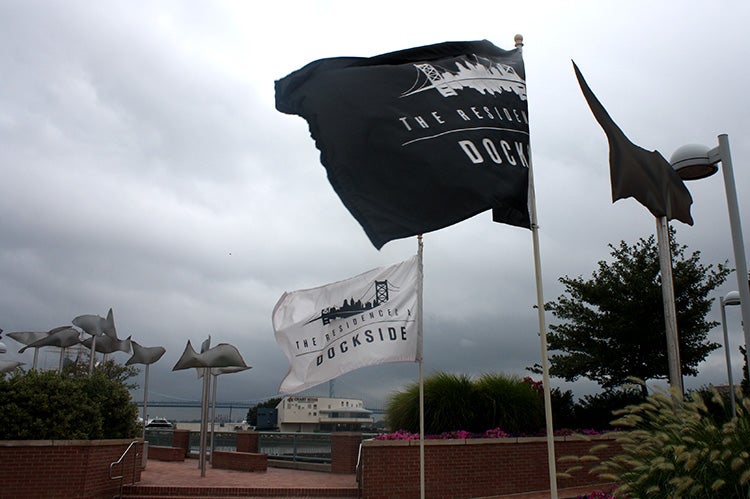Civic groups hope for changes to sign-control bill before City Council

In preparing its final report to City Council last fall, the now-disbanded Zoning Code Commission decided to punt an especially intricate and bungled section of the current code—sign regulations—to a later date. A working group of the Planning Commission managed to rewrite the sign-control chapter this past spring, but City Council, formally receiving the chapter on May 17th, decided to re-punt it until this coming fall in order to spend more time reviewing it.
Eva Gladstein, deputy director of the Planning Commission, said she is working to set up meetings with Council members to discuss the bill. Before passing, the bill will need to go before a Council committee, at which point it may be amended.
In the interim, several constituent groups have aired recommendations, hoping to have them included in the final version of the chapter, which Council will presumably insert into the new code after it reconvenes in September.
The Central Delaware Advocacy Group (CDAG) recently shared with PlanPhilly a letter sent to Councilman Mark Squilla summarizing seven recommendations for different portions of the chapter. These include limiting the number—rather than simply the total area—of signs allowed on each building, creating a special signage overlay district for the Central Delaware River, beefing up provisions on administration to make enforcement easier, implementing a design review process for signs that would significantly impact surrounding areas, and clarifying language in sections on accessory and non-accessory signs.
The group also suggests adding an extra statement of purpose to the chapter, which would read, “The intent of these regulations is to reduce visual clutter, ensure safety for pedestrians and vehicles, make driving and walking less distracting, protect the public from harmful commercial interests, discouraging exploitation of the public, and set a level of sign standards that others might emulate.”
The CDAG letter reflects concerns raised by Old City Civic Association (OCCA) and the Crosstown Coalition in separate letters to members of the Planning Commission. Rob Kettell, who shared the documents with PlanPhilly, is active in all three groups.
An OCCA document dated March 28th, 2012, contains detailed markups of the Commission’s proposed sign chapter, including suggestions for prohibitions on specific types of signs, a new Central Delaware overlay, and the creation of a civic design review process for signs. The latter process, per Old City Civic Association, would bring together representatives of the Historic,
Art, and Fairmount Park commissions, as well as the Commerce Department and the affected Registered Community Organization to weigh in on major new signs.
The Association’s proposed criteria for the sign design review, quoted below, are ambitious:
1) signs should have a favorable impact on the public realm,
2) improve walkability,
3) contribute to street activities,
4) ensure the safety of pedestrians and vehicles,
5) increase enjoyment of public spaces,
6) discourage illegal and harmful activities,
7) reinforce and protect the desired characteristics of the surrounding neighborhood,
8) be consistent with the intended character of the neighborhood, and
9) reinforce the city’s comprehensive plan.
Rob Kettell, who participated in the Planning Commission’s civic engagement sessions several months ago, raised the design review idea at that time, as did several other participants. Kettell said the Commission did not “reject the idea outright,” although it is not included in the bill before City Council. Gladstein said that the sign working group had actively considered some of the suggestions contained in CDAG’s letter to Squilla in finalizing the sign chapter and ultimately decided not to include them.
Specifically, CDAG’s letter and accompanying markup of the bill before Council—as well as the OCCA and Crosstown Coalition documents—call for a limit of six signs per building in order to inhibit visual clutter. Gladstein said the Commission elected not to add such a limit to the sign controls out of concern over enforceability.
“Regulating by area rather than number would make the code easier to enforce,” Gladstein said.
Gladstein declined to comment on any ideas that the Commission might try to get added into the bill when Council takes up again, but said it would continue to listen to all recommendations.
“Obviously we will consider these comments and any others we receive,” she said.
Of course, now that the bill has been introduced into City Council, the Planning Commission has no direct control over its contents. That control belongs to Council itself, which has proven adept at adjusting the contents of bills in committee. And that’s why, Rob Kettell said, he’ll take his suggestions directly to his District Councilman.
Contact the reporter at jaredbrey@gmail.com and follow him on Twitter @jaredbrey
WHYY is your source for fact-based, in-depth journalism and information. As a nonprofit organization, we rely on financial support from readers like you. Please give today.



